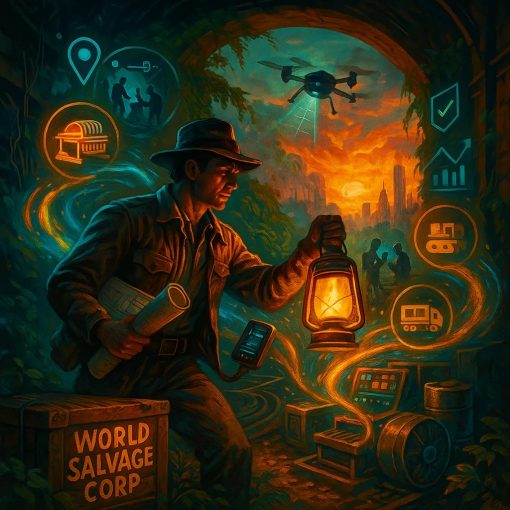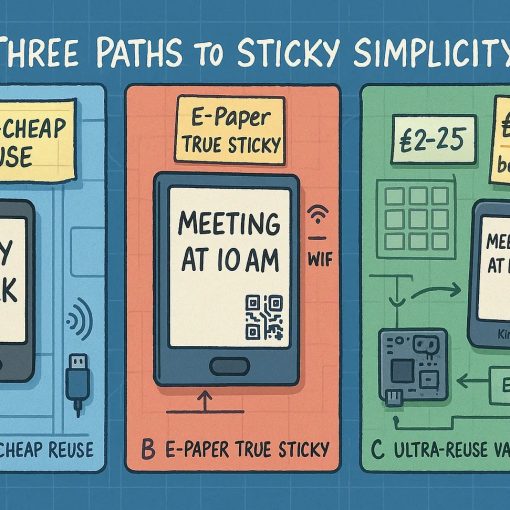Designing the Future, the Evolution of User Behaviour Free Jazz
Previously on “Simplifying Streaming with an Aggregator Service ” :
An aggregator for streaming services part 1
Simplifying Streaming with an Aggregator Service Part 2: Proposal and analysis
Simplifying Streaming with an Aggregator Service Part 3: Inflection points.
Simplifying Streaming with an Aggregator Service Part 4: Inflection points, lets remix
This outline is different, it rethinks streaming services from a user centric point of view , predictive and predictive design user experience persective. Creating and predicting the needs and profiles of users for top SVOD OTT (Subscription Video on Demand Over-The-Top) streaming services involves integrating a diverse range of data from metadata to behavioural science and demographic statistics. The development of a comprehensive user profile requires a sophisticated understanding of individual preferences, behaviours, and characteristics. It needs a lot of work and research but I decided to give it a go,here’s a breakdown of the key elements:
1. Metadata:
– Content Metadata: Information about the content itself, including genre, duration, language, director, actors, release date, and user ratings.
– Viewing History: Data on what users have watched, how long they watched it, and patterns in their viewing history.
– Content Engagement Metrics: Analyzing which parts of a video users engage with the most, e.g., likes, comments, and shares.
2. Behavioural Science:
– Psychographics: Understanding the psychological aspects of user behaviour, including attitudes, interests, values, and lifestyle preferences.
– User Surveys and Feedback: Gathering direct feedback on user preferences, satisfaction, and areas of improvement.
– Cognitive Biases: Identifying cognitive biases that influence decision-making and content preferences.
3. Demographic Statistics:
– Age, Gender, and Location: Basic demographic information to understand the user’s context and potential content preferences based on age group, gender, and geographical location.
– Occupation and Income Level: Information about the user’s occupation and income level can inform content preferences and willingness to subscribe to premium services.
– Family Status: Insights into whether users are single, married, or have families, which can impact content choices.
4. Machine Learning and Predictive Analytics:
– Recommendation Algorithms: Utilizing machine learning algorithms to analyse user behaviour and preferences to provide personalized recommendations.
– Predictive Modelling: Developing models that forecast user behaviour, including content choices, engagement levels, and subscription renewals.
– Churn Prediction: Identifying patterns that may indicate a user is likely to cancel their subscription.
5. Advanced Analytics and A/B Testing:
– A/B Testing: Experimenting with different content recommendation algorithms, user interfaces, and features to optimize user engagement.
– User Path Analysis: Analyzing the paths users take through the platform, identifying popular content and potential areas for improvement.
6. Privacy-Centric Approaches:
– Consent-Driven Data Collection: Ensuring that all data collected is based on user consent and complies with privacy regulations.
– Anonymization Techniques: Using techniques to anonymize user data while still extracting valuable insights for personalization.
7. Market Research:
– Competitor Analysis: Understanding what other SVOD OTT services offer and identifying gaps or areas where differentiation is possible.
– Trends in Content Consumption: Staying abreast of industry trends and emerging content preferences.
The framed world of predicting user needs in the SVOD OTT streaming service industry involves a dynamic and adaptive system. It includes a continuous feedback loop where data is analysed, new content is created or acquired, algorithms are refined, and user experiences are improved. The ultimate goal is to create an ecosystem that not only predicts but also shapes user preferences, providing a personalized and engaging streaming experience. This framework should be ethical, privacy-conscious, and responsive to the evolving landscape of user behaviours and preferences.
Definition of User Personas and Profiles
Understanding user behaviour is paramount for the success of SVOD OTT services. User personas are comprehensive profiles built over time, incorporating first-party and third-party data points gathered with user opt-in workflows. These personas represent groups of users who engage with the platform in similar ways, providing a basis for design decisions.
Principles for Designing SVOD OTT Services
1. Personalization: SVOD services should employ AI-driven video personalization, learning user preferences to offer tailored content suggestions.
2. User Privacy: Content personalization processes must respect user privacy, ensuring data collection is consent-driven and enhances the customer experience.
3. Content Metadata: Accurate video metadata, including file format, copyright, and a summary of the video, is crucial for effective personalization.
4. Artwork Customization: Contextualized visual experiences, such as tailored posters, thumbnails, and trailers, enhance engagement by aligning with user personas.
Predictive Profile Personas of Users
1. AI Enthusiasts: Users who embrace AI-driven personalization and are excited about immersive, customized storytelling experiences.
2. Global Content Enthusiasts: Viewers passionate about diverse narratives, including content from emerging markets like South Korea, India, Nigeria, and South Africa.
3. Interactive Gamers: Users who enjoy interactive elements within traditional movies and seamless integration of gaming content.
Services Required from the User’s Point of View
1. AI-Driven Recommendations: Users expect personalized content recommendations based on their preferences and viewing history.
2. Global Access Pass: Premium subscription tiers offering access to international content libraries, breaking down geo-restrictions.
3. Immersive Teasers and Sneak Peeks: Users desire engaging previews in VR format, providing immersive glimpses into upcoming content.
Points of Inflection and Predictive Timeline
1. 2023-2025: Initial AI Integration and Content Diversity
– AI algorithms introduced for enhanced content recommendations.
– South Korea and India contribute significantly to global content production.
– New features include AI-driven content insights and global access passes.
2. 2028-2030: Advanced AI, VR Integration, and Interactive Storytelling
– AI-driven personalization extends to virtual reality experiences.
– Integration of gaming and interactive story elements.
– Nigeria and South Africa gain recognition in global content dynamics.
3. 2030-2035: Next-Gen Streaming and Technological Advancements
– Streaming platforms evolve into comprehensive entertainment ecosystems.
– Global demand for unique narratives from international film makers continues.
– Speculative developments include AI-powered conversational suggestions and virtual events.
Future Personas and Extrapolation of Ideas
1. Voice Synthesis Enthusiasts: AI-driven dubbing for foreign language films using voice synthesis technology.
2. Augmented Reality Explorers: Interacting with the intersection of movies and games through augmented reality.
3. Digital Re-Creation Advocates: Utilizing image libraries for realistic digital re-creation of performers in older movies.
4. Mobile Projection Enthusiasts: Exploring the use of mobile devices to project movies or 3D content for on-the-go entertainment.
Suggested Products, Features, and Services
1. Voice Synthesis for Dubbing Service: AI-driven dubbing for foreign language films with realistic voice synthesis.
2. Augmented Reality Movie Experiences: Implementing augmented reality to create personalized and interactive movie experiences.
3. Digital Re-Creation Platform: A platform allowing filmmakers to digitally recreate performers for post-mortem performances.
4. Mobile Projection App: Developing a mobile app enabling users to project movies or 3D content using their mobile devices.
In a world driven by user data, SVOD OTT services must continually innovate, respecting user privacy while providing personalized, diverse, and immersive experiences. The future promises a dynamic landscape, and the key lies in anticipating user needs, leveraging technology, and embracing new possibilities in content creation and consumption.
If I created a streaming service today: Some considerations / features for a User centered SVOD OTT service in a social media world
Social Media Integration for Enhanced SVOD OTT Services:
1. Social Sharing:
– Real-time Sharing: Allow users to share their current watchlist, favorite shows, or achievements in real-time on their social media profiles.
– Customizable Updates: Provide options to customize the content of shared updates for privacy-conscious users.
- Early release of behind the scenes
- Sharing the user data on what they have watched and AI predictive wish lists make the experience of more interactive time barcharts by genre versus anonimised data
2. Watch Parties:
– Seamless Invitations: Enable users to invite friends on social media to join virtual watch parties directly from the platform.
– Live Chat Integration: Facilitate real-time chat during watch parties for an interactive shared viewing experience.
3. User-Generated Content (UGC):
– UGC Challenges: Encourage users to create and share content, such as reviews, parodies, or creative edits, with branded challenges.
– UGC Playlists: Allow users to curate and share playlists of their favorite content, promoting user-generated recommendations.
4. Feedback and Polls:
– Content Polls: Conduct polls on social media platforms to gather user preferences for future content additions.
– Feedback Surveys: Share surveys on social media to collect feedback on new features, ensuring continuous improvement.
5. Exclusive Social Content:
– Behind-the-Scenes: Share exclusive behind-the-scenes content, interviews with actors, and insights into the production process on social media.
– Teasers and Trailers: Release exclusive teasers or trailers on social platforms to generate anticipation and engagement.
6. Social Authentication:
– Social Login: Simplify the onboarding process by allowing users to sign up or log in using their social media credentials.
– Privacy Controls: Provide users with granular control over what aspects of their SVOD OTT activity are shared on their social profiles.
7. Gamified Challenges:
– Social Challenges: Introduce gamified challenges related to content discovery, encouraging users to share achievements on social media.
– Leaderboards: Create leaderboards for social challenges, fostering healthy competition among users.
8. Global Community Engagement:
– Language-Specific Social Groups: Facilitate the creation of language-specific user groups on social media for global inclusivity.
– Regional Content Recommendations: Share region-specific content recommendations through social channels.
9. Live Q&A Sessions:
– Interactive Sessions: Conduct live Q&A sessions with creators, actors, or industry experts on social media platforms.
– User-Generated Questions: Allow users to submit questions in advance, making the sessions more interactive.
10. Social Media-Driven Contests:
– Fan Art Contests: Host fan art contests on social media, encouraging users to showcase their artistic talents.
– Caption Contests: Run caption contests for scenes from popular shows, fostering creativity and engagement.
11. Wellness and Mental Health Initiatives:
– Wellness Challenges: Introduce challenges related to wellness and mental health, promoting a holistic approach to entertainment.
– Community Support Groups: Share resources and information on mental health through social channels, fostering a supportive community.
12. Environmental Sustainability Campaigns:
– Eco-Friendly Streaming Pledges: Encourage users to take pledges for eco-friendly streaming practices and share their commitments on social media.
– Impact Updates: Share updates on the positive environmental impact of collective user efforts.
13. Exclusive Social Media Promotions:
– Limited-Time Offers: Announce exclusive promotions or limited-time offers on social media, driving user engagement.
– Social Media-Only Previews: Provide early access or exclusive previews to users who engage with the service on social platforms
– Invitaion only music concerts with th VR option
14. Educational Campaigns:
– Industry Insights: Share educational content about the SVOD and entertainment industry on social media.
– User Tutorials: Create and share tutorials on social platforms to educate users about new features and functionalities.
By integrating these features with social media platforms, SVOD OTT services can not only enhance user engagement but also leverage the viral nature of social sharing to expand their user base and create a vibrant and interconnected community of entertainment enthusiasts.
Appendices
The speculation continues:
Some consideration of services for each generational group:
Baby Boomers (Born 1946-1964, currently 57-75 years old):
1. Classic Movie Collections: Curated collections of classic films and timeless TV shows for nostalgic viewing.
2. Educational Documentaries: A library of educational documentaries on history, science, and culture.
3. Relaxation and Wellness Channels: Dedicated channels offering meditation sessions, gentle workouts, and wellness content.
Gen X (Born 1965-1979/80, currently 41-56 years old):
1. Throwback TV Series: Exclusive access to hit TV series from the ’80s and ’90s for a nostalgic trip down memory lane.
2. Career Transition Documentaries: Documentaries and series exploring career changes and reinvention stories.
3. Family Movie Nights: A selection of family-friendly movies for quality bonding time.
Gen Y (Millennials) (Born 1981-1994/6, currently 25-40 years old):
1. Binge-Worthy Series: Exclusive and binge-worthy series catering to diverse tastes and interests.
2. Financial Success Documentaries: Documentaries on personal finance, entrepreneurship, and success stories.
3. Remote Work Lifestyle Shows: Series showcasing the remote work lifestyle, productivity tips, and virtual team dynamics.
Gen Y.1 (25-29 years old):
1. Quick Workouts and Health Series: Short, effective workout series and health-focused content for busy individuals.
2. Adventure Travel Series: Documentaries and series featuring adventurous travel experiences and exploration.
3. Trendy Fashion Documentaries: Documentaries exploring the latest fashion trends, sustainable fashion, and style inspiration.
Gen Y.2 (29-39 years old):
1. Parenting and Family Series: Exclusive series on parenting tips, family adventures, and child development.
2. Continuous Learning Channels: Dedicated channels for ongoing education, skill-building, and personal development.
3. Sustainable Living Documentaries: Documentaries on eco-friendly living, sustainable practices, and conscious consumerism.
Gen Z (Born 1997-2012, currently 9-24 years old):
1. Short-Form Originals: Original short-form series and content for quick and engaging entertainment.
2. Gaming Tournaments and Esports Shows: Exclusive coverage of gaming tournaments, esports events, and gaming lifestyle.
3. Youth Activism Series: Series highlighting youth activism, social causes, and community initiatives.
Gen A (Alpha) (Born from 2012, extending at least through 2025):
1. Educational Animated Shows: Interactive and educational animated series for early childhood learning.
2. Parent-Child Interactive Series: Interactive series encouraging parent-child engagement and learning.
3. Kid-Friendly Adventure Series: Adventure series designed for young viewers with a focus on exploration and creativity.
These SVOD OTT services should consider the preferences and interests of each generation, ensuring a diverse and engaging content library that caters to a broad audience.
Rethinking SVOD OTT services from a User centric POV
From a user-centric point of view involves designing a platform that prioritizes individual preferences, behaviours, and needs. Taking into account the information gathered from metadata, behavioural science, demographic statistics, and more, here’s an innovative approach to creating a user-centric SVOD OTT service:
1. Personalized Content Discovery:
– Dynamic User Profiles: Create dynamic and evolving user profiles that not only capture viewing history but also adapt to changing preferences in real-time.
– Continuous Learning Algorithms: Implement advanced AI algorithms that learn and adapt to individual preferences, incorporating feedback loops for continuous improvement.
2. Interactive and Immersive Features:
– Interactive Storytelling: Develop content that allows users to participate in decision-making, influencing the narrative in real-time for a personalized experience.
– Virtual Reality (VR) Integration: Extend the viewing experience into virtual reality, providing an immersive and engaging environment for users who seek a more interactive experience.
3. Targeted User Personas:
– Generational Content Curation: Tailor content based on generational preferences, recognizing the unique tastes of Baby Boomers, Gen X, Millennials, Gen Z, and Generation Alpha.
– Specialized Content Streams: Introduce specialized content streams for specific user personas, such as curated content for AI enthusiasts, global content enthusiasts, and interactive gamers.
4. Privacy-Centric Design:
– Explicit Consent Mechanisms: Implement clear and user-friendly consent mechanisms for data collection, ensuring that users have control over what information is used for personalization.
– Transparent Data Usage Policies: Clearly communicate how user data is used to build personalized experiences while maintaining strict privacy standards.
5. Predictive Innovation:
– Anticipatory Recommendations: Use predictive analytics to anticipate user preferences, offering content suggestions before users actively search for them.
– Future-Ready Features: Invest in emerging technologies like voice synthesis, augmented reality, and mobile projection, creating a platform that stays ahead of evolving user needs.
6. Community and Social Integration:
– User-Generated Content: Facilitate user-generated content creation and sharing, allowing users to contribute to the platform’s content library.
– Social Viewing Experiences: Enable social features that allow users to watch and interact with friends and family in real-time, even if they are physically apart.
7. Accessibility and Global Inclusivity:
– Global Access Passports: Provide subscription tiers that offer access to international content libraries, breaking down geo-restrictions and fostering a global community of viewers.
– Multilingual Support: Implement multilingual support for content, subtitles, and user interfaces, ensuring inclusivity for diverse audiences.
8. Continuous Evolution:
– Agile Development Approach: Adopt an agile development methodology to quickly respond to user feedback and market trends.
– Iterative Design: Regularly update the platform based on user behavior and preferences, ensuring a continuous evolution that aligns with user expectations.
9. Ethical AI and Content Practices:
– Fair Representation: Ensure fair representation of diverse cultures, ethnicities, and perspectives in content creation.
– Guardrails for AI: Implement ethical guardrails for AI-driven personalization to prevent unintentional bias and ensure a responsible user experience.
By focusing on the user at every stage, from content discovery to engagement and beyond, this reimagined SVOD OTT service strives to create a personalized, inclusive, and technologically advanced platform that anticipates and fulfils the diverse needs of a global audience. This approach aims to create a symbiotic relationship where the platform continuously learns from and adapts to user preferences, fostering long-term user loyalty and satisfaction.




One thought on “Simplifying Streaming with an Aggregator Service Part 5: The user centric POV.”